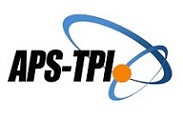Penerimaan dan Penggunaan E-Learning pada Masa Pandemi Covid-19: Aplikasi Model UTAUT2
Abstract
Abstrak: Penelitian ini bertujuan untuk memperoleh dan menganalisis bukti empiris faktor-faktor yang mempengaruhi penerimaan dan penggunaan e-learning oleh peserta didik pada jenjang SLTA dan Perguruan Tinggi di Tasikmalaya dengan total subjek penelitian sebanyak 289 responden. Teknik analisis data dilakukan dengan Partial Last Squares – Structural Equation Modeling (PLS – SEM) melalui software SmartPLS versi 3.2.9. Berdasarkan hasil pengujian pada sampel siswa SLTA diketahui bahwa Social influence dan Habit berpengaruh positif terhadap Behavioral intention, adapun Use behavior e-learning pada siswa SLTA secara signifikan dipengaruhi oleh Habit dan Behavioral intention. Pengujian pada kelompok sampel mahasiswa menunjukkan bahwa facilitating condition, hedonic motivation, dan habit berpengaruh signifikan terhadap behavioral intention, adapun Use behavior e-learning pada mahasiswa hanya dipengaruhi oleh Habit. Melalui penelitian ini akan dapat diketahui faktor-faktor determinan yang mempengaruhi penggunaan e-learning pada peserta didik.
Abstract: This study aims to obtain and analyze empirical evidence of the factors affecting the acceptance and use of e-learning by students at the high school and college students in Tasikmalaya with a total number are 289 research objects. The data analysis technique was done by using Partial Last Squares - Structural Equation Modeling (PLS-SEM) through SmartPLS version 3.2.9 software. Based on the test results showed in a sample of high school students, it is known that social influence and Habit gave a positive effect on Behavioral intention, while the Use behavior of e-learning on high school students was significantly influenced by Habit and Behavioral intention. Then the Testing on a sample group of college students showed that facilitating conditions, hedonic motivation, and habits gave a significant effect on behavioral intention, while the use of e-learning behavior on students only influenced by Habit. Through this research, it will be able to know the determinant factors that affect the use of e-learning in students.
Keywords
Full Text:
PDFReferences
Agudo-peregrina, Á. F., Hernández-garcía, Á., & Pascual-miguel, F. J. (2014). Computers in Human Behavior Behavioral Intention, Use Behavior and The Acceptance of Electronic Learning Systems: Differences Between Higher Education and Lifelong Learning. Computers and Human Behavior, 34, 301–314. https://doi.org/10.1016/j.chb.2013.10.035
Ain, N. U., Kaur, K., & Waheed, M. (2016). The influence of learning value on learning management system use: An extension of UTAUT2. Information Development, 32(5), 1306–1321. https://doi.org/10.1177/0266666915597546
Ajzen, I. (1991). The theory of planned behavior. Orgnizational Behavior and Human Decision Processes, 50, 179–211. https://doi.org/10.1016/0749-5978(91)90020-T
Ameri, A., Khajouei, R., Ameri, A., & Jahani, Y. (2019). Acceptance of a mobile-based educational application (LabSafety) by pharmacy students : An application of the UTAUT2 model. Education and Information Technologies, 25, 419–435. https://doi.org/https://doi.org/10.1007/s10639-019-09965-5
Arain, A. A., Hussain, Z., Rizvi, W. H., & Vighio, M. S. (2019). Extending UTAUT2 Toward Acceptance of Mobile Learning in The Context of Higher Education. Universal Access in the Information Society, 18(3), 659–673. https://doi.org/10.1007/s10209-019-00685-8
Arianto, F., Susarno, L. H., Dewi, U., & Safitri, A. F. (2020). Model Penerimaan dan Pemanfaatan Teknologi Di Perguruan Tinggi. Jurnal Teknologi Pendidikan, 08(01), 110–121.
Arsendy, S., Gunawan, C. J., Rarasati, N., & Suryadarma, D. (2020). Teaching and Learning During School Closure : Lessons from Indonesia (Nomor 89).
Attuquayefio, S. N., & Addo, H. (2014). Using The UTAUT Model to Analyze Students’ ICT Adoption. International Journal of Education Development Usiang Information and Communication Technology, 10(3), 75–86.
Brangier, E., & Adele, S. (2013). Evolutions in The Human Technology Relationship: Rejection, acceptance and Technosymbiosis. International Journal on WWW/ Internet, 11(3), 46–60.
Chaeruman, U. A. (2020). Ruang Belajar Baru dan Implikasi Terhadap Pembelajran di Era Tatanan Baru. Jurnal Teknologi Pendidikan, 08(01), 142–153. https://doi.org/http://dx.doi.org/10.31800/jtp.kw.v8n1.p142--153
Chin, W. W. (2000). Frequently Asked Questions - Partial Least Squares & PLS - Graph. http://disc-nt.cba.uh.edu/chin/indx.html.
Chu, T. H., & Chen, Y. Y. (2016). With Good We Become Good: Understanding e-learning adoption by theory of planned behavior and group influences. Computers and Education, 92–93, 37–52. https://doi.org/10.1016/j.compedu.2015.09.013
Davis, F. D., Bagozzi, R. P., & Warshaw, P. R. (1989). User Acceptance of Computer Technology: A Comparison of Two Theoretical Models. Management Science, 35(8), 982–1003. https://doi.org/10.1287/mnsc.35.8.982
Dwivedi, Y. K., Rana, N. P., Jeyaraj, A., Clement, M., & Williams, M. D. (2017). Re-examining the Unified Theory of Acceptance and Use of Technology ( UTAUT ): Towards a Revised Theoretical Model. Information Systems Frontiers, 21, 719–734. https://doi.org/10.1007/s10796-017-9774-y
El-Masri, M., & Tarhini, A. (2017). Factors affecting the adoption of e-learning systems in Qatar and USA: Extending the Unified Theory of Acceptance and Use of Technology 2 (UTAUT2). Educational Technology Research and Development, 65, 743–763. https://doi.org/10.1007/s11423-016-9508-8
Farahat, T. (2012). Applying the Technology Acceptance Model to Online Learning in the Egyptian Universities. International Educationaal Technology Conference, 64, 95–104. https://doi.org/10.1016/j.sbspro.2012.11.012
Fishbein, M., & Ajzen, I. (1975). Belief, Attitude, Intention and Behaviour: An Introduction to Theory and Research. Addison-Wesley Publishing.
Ghozali, I., & Latan, H. (2015). Partial Last Squares: Konsep, Teknik, dan Aplikasi Menggunakan Program SmartPLS 3.0 (2 ed.). Badan Penerbit Undip.
Gunasinghe, A., Hamid, J. A., Khatibi, A., & Azam, S. M. F. (2020). The Adequacy of UTAUT-3 in Interpreting Academician’s Adoption to E-Learning in Higher Education Environments. Interactive Technology and Smart Education, 17(1), 86–106. https://doi.org/10.1108/ITSE-05-2019-0020
Hair, J. F., Ringle, C. M., & Sarstedt, M. (2011). PLS-SEM: Indeed a silver bullet. Journal of Marketing Theory and Practice, 19(2), 139–152. https://doi.org/10.2753/MTP1069-6679190202
Harsono, L. D., & Suryana, L. A. (2014). Factors Affecting the Use Behavior of Social Media Using UTAUT 2 Model. Proceedings of the First Asia-Pacific Conference on Global Business, Economics, Finance and Social Sciences (AP 14 Singapore Conference), August, 1–3.
Hoerunnisa, A., Suryani, N., & Efendi, A. (2019). Efektivitas Penggunaan E-Learning pada Kelas Multimedia untuk Meningkatkan Prestasi dan Motivasi Belajar Siswa SMK. Jurnal Teknologi Pendidikan, 07(02), 123–137.
Jarvis, C. B., Mackenzie, S. B., Podsakoff, P. M., Giliatt, N., & Mee, J. F. (2003). A Critical Review of Construct Indicators and Measurement Model Misspecification in Marketing and Consumer Research. Journal of Consumer Research, 30(2), 199–218. https://doi.org/10.1086/376806
Johnson, B. R., & Christensen, L. (2017). Educational Research: Quantitative, Qualitative, and Mixed Approaches (6 ed.). SAGE Publications, Inc.
Kumar, B. A., & Mohite, P. (2017). Usability Study of Mobile Learning Application in Higher Education Context: An Example from Fiji National University. In A. Murphy, H. Farley, L. E. Dyson, & H. Jones (Ed.), Mobile Learning in Higher Education in the Asia-Pacific Region: Harnessing Trends and Challenging Orthodoxies (Nomor July, hal. 607–622). Springer Nature Singapore. https://doi.org/10.1007/978-981-10-4944-6
Kusnendi, K. (2008). Model-Model Persamaan Strutural Satu dan Multigroup Sampel dengan LISREL. Alfabeta.
Lewis, C. C., Fretwell, C. E., Ryan, J., & Parham, J. B. (2013). Faculty Use of Established and Emerging Technologies in Higher Education : A Unified Theory of Acceptance and Use of Technology Perspective. International Journal of Higher Education, 2(2), 22–34. https://doi.org/10.5430/ijhe.v2n2p22
Mehta, A., Morris, N. P., Swinnerton, B., & Homer, M. (2019). The Influence of Values on E-learning Adoption. Computers and Education, 141. https://doi.org/10.1016/j.compedu.2019.103617
Merhi, M. I. (2015). Factors influencing higher education students to adopt podcast: An empirical study. Computers and Education, 83, 32–43. https://doi.org/10.1016/j.compedu.2014.12.014
Nguyen, T. D., Nguyen, D. T., & Cao, T. H. (2014). Acceptance and use of information system: E-learning based on cloud computing in Vietnam. Information and Communication Technology, 8407(4960), 139–149. https://doi.org/10.1007/978-3-642-55032-4_14
Prasistayanti, N. W. N., Santyasa, W. I., & Warpala, W. S. I. (2019). Pengaruh Desain E-Learning Terhadap Hasil Belajar dan Keterampilan Berpikir Kreatif Siswa dalam Mata Pelajaran Pemrograman pada Siswa SMK. Jurnal Teknologi Pendidikan, 07(02), 138–155.
Putra, R. D. Y. S., Susilaningsih, S., & Abidin, Z. (2020). Pengembangan Media Website E-learning Berbasis Moel Responsive Web Design untuk Siswa SMA. Jurnal Kajian Teknologi Pendidikan, 3(3), 292–302. https://doi.org/10.17977/um038v3i32020p292
Recker, J. (2016). Reasoning about Discontinuance of Information System Use. Journal of Information Technology Theory and Application, 17(1), 41–66.
Rohimah, R., Riswandi, R., & Fitriawan, H. (2020). Pengembangan Media Pembelajaran Informatika Melalui E-Learning untuk Meningkaykan Berpikir Kreatif Siswa. Jurnal KajianTeknologi Pendidikan, 3(3), 330–339. https://doi.org/10.17977/um038v3i32020p330
Salloum, S. A., & Shaalan, K. (2018). Factors Affecting Students ’ Acceptance of E-Learning System in Higher Education Using UTAUT and Structural Equation Modeling Approaches. Proceedings of the International Conference on Advanced Intelligent Systems and Informatics 2018, 2, 469–480. https://doi.org/10.1007/978-3-319-99010-1
Salsabila, Z., Abdurachman, E., & Marpaung, S. H. (2019). Behavior Analysis of The Use of EE-learning using UTAUT Model Approach (Case study: STMIK Mikroskil). Journal of Theoretical and Applied Information Technology, 97(7), 1891–1901.
Shimp, T. A., & Kavas, A. (1984). The Theory of Reasoned Action Applied to Coupon Usage. Journal of Consumer Research, 11(3), 795. https://doi.org/10.1086/209015
Sutanto, S., Ghozali, I., & Handayani, R. S. (2018). Faktor-Faktor Yang Memengaruhi Penerimaan Dan Penggunaan Sistem Informasi Pengelolaan Keuangan Daerah (Sipkd) Dalam Perspektif the Unified Theory of Acceptance and Use of Technology 2 (Utaut 2) Di Kabupaten Semarang. Jurnal Akuntansi Dan Auditing, 15(1), 37. https://doi.org/10.14710/jaa.15.1.37-68
Venkatesh, V., Morris, M. G., Davis, G. B., & Davis, F. D. (2003). User Acceptance of Information Technology: Toward a Unified View. MIS Quarterly, 27(3), 425–478. https://doi.org/10.1017/CBO9781107415324.004
Venkatesh, V., Thong, J. L. ., & Xu, X. (2012). Consumer Acceptance and Use of Information Technology: Extending The Unified Theory of Acceptance and Use of Thechnology. MIS Quarterly, 36(1), 157–178. https://doi.org/10.1109/MWSYM.2015.7167037
Witt, C. De, & Gloerfeld, C. (2018). Mobile Learning and Higher Education Range of technological Solutions. In D. Kergel, B. Heidkamp, P. Kjærsdam Telléus, T. Rachwal, & S. Nowakowski (Ed.), The Digital Turn in Higher Education (hal. 61–79). Springer Fachmedien Wiesbaden. https://doi.org/https://doi.org/10.1007/978-3-658-19925-8_6.
Wu, J., Wang, S., & Lin, L. (2007). Mobile Computing Acceptance Factors in The Healthcare Industry: A Structural Equation Model. International Journal of Medical Information, 6, 66–77. https://doi.org/10.1016/j.ijmedinf.2006.06.006
Yakubu, M. N., & Dasuki, S. I. (2018). Factors Affecting The Adoption of E-Learning Technologies Among Higher Education Students in Nigeria : A structural Equation Modelling Approach. Information Development, 35(3), 1–11. https://doi.org/10.1177/0266666918765907
Yodha, S., Abidin, Z., & Adi, E. (2019). Persepsi Mahasiswa Terhadap Pelaksanaan E-Learning Dalam Mata Kuliah Manajemen Sistem Informasi Mahasiswa Jurusan Teknologi Pendidikan Universitas Negeri Malang. Jurnal Kajian Teknologi Pendidikan, 2(3), 181–187. https://doi.org/10.17977/um038v2i32019p181
Zhang, W., Wang, Y., Yang, L., & Wang, C. (2020). Suspending Classes Without Stopping Learning: China’s Education Emergency Management Policy in the COVID-19 Outbreak. Journal of Risk and Financial Management, 13(3), 55. https://doi.org/10.3390/jrfm13030055
DOI: http://dx.doi.org/10.17977/um038v3i42020p435
Refbacks
- There are currently no refbacks.
Copyright (c) 2020 Dede Kurnia

This work is licensed under a Creative Commons Attribution-ShareAlike 4.0 International License.
JKTP: Jurnal Kajian Teknologi Pendidikan published by Department of Educational Technology, Faculty of Education, State University of Malang in Collaboration with Asosiasi Program Studi Teknologi Pendidikan Indonesia (APS TPI).
Publisher Address:
Lab. Teknologi Pendidikan, Gd.E2, Lt.1
Fakultas Ilmu Pendidikan Universitas Negeri Malang
Jl. Semarang 5, Kota Malang Email: jktp.fip@um.ac.id
========================================================================================================
| INDEXED BY | TOOLS | PLAGIARISM CHECK | ARTICLE TEMPLATE |
|
|

JKTP: Jurnal Kajian Teknologi Pendidikan is licensed under a Creative Commons Attribution-ShareAlike 4.0 International License.
JKTP Statistics (Since July 13th, 2020)





.png)












